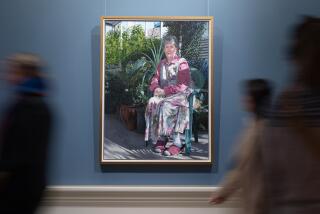Morey Bernstein; ‘Bridey Murphy’ Hypnotist
- Share via
Morey Bernstein, a Colorado businessman whose interest in hypnotism led to the 1956 bestseller “The Quest for Bridey Murphy,” has died.
Bernstein, a native of Pueblo, Colo., died there on April 2 of cardiac arrhythmia. He was 79.
Bernstein was educated at the Wharton School of the University of Pennsylvania and took over the family business, a junkyard. He was a gifted entrepreneur, turning the junkyard into a first-class mail-order outfit. Next he turned to the corral business, revolutionizing it with galvanized steel corral panels. Then he became involved in investment brokering.
In the 1940s, he saw a friend demonstrate hypnotism at a party and was so fascinated by its possibilities for curing ailments that he began an intensive study of the art.
On Nov. 29, 1952, the amateur hypnotist decided to try an experiment in age regression on one of his most responsive subjects, a 29-year-old housewife named Virginia Tighe. Bernstein asked her to recall her childhood, which she did. Then he eased her over “the hump,” as he called it, to the time before she was born. That’s when Tighe began speaking in a thick Irish brogue of another childhood two centuries earlier. Over several sessions, Tighe described her life as a woman named Bridey Murphy, who was born Dec. 20, 1798, near Cork, Ireland.
The Denver Post wrote a story about her. Reaction was so intense that Bernstein wrote a book, disguising Tighe as a woman named Ruth Simmons. “Few books have seized the imagination of America as firmly,” Life magazine wrote of the 1956 work, which dominated bestseller lists for 26 weeks. It was made into a movie, with Louis Hayward as Bernstein and Teresa Wright as Tighe, later the same year. The ensuing publicity changed Bernstein’s and Tighe’s lives completely. Priests came from as far away as Chicago to pray for her soul, and crowds gathered to catch a glimpse of her.
Various investigations failed to prove that Bridey Murphy actually existed, but Bernstein’s belief that his subject had a previous life in Ireland never faltered.
Tighe expressed ambivalence about Bridey Murphy’s existence in her later years, telling the St. Petersburg Times in 1987, “I really don’t know how I feel about Bridey. . . . I don’t identify with her. It really hasn’t altered my life to the point where I had to sit down and think about her. She wasn’t really too interesting a person.”
She said she did not capitalize on her unwelcome notoriety, estimating once that she had turned down a total of $50,000 over the years to retell her story to other publications. She died of cancer in 1995.
Bernstein gave up hypnotism after the Bridey Murphy experience and became a recluse and a philanthropist, donating money for buildings in Pueblo and giving funds to local colleges. He suffered from a crippling spinal condition that kept him confined to bed.
At the end of his life, he saw no visitors except for a business partner and his housekeeper. He dismissed critics who called him a flimflam artist after he told the world about Bridey Murphy. “If there was collusion, if it was a hoax, it’s funny that neither of us made much money from it,” he said.
He is survived by a brother, Robert, of Bethesda, Md.
More to Read
Sign up for our Book Club newsletter
Get the latest news, events and more from the Los Angeles Times Book Club, and help us get L.A. reading and talking.
You may occasionally receive promotional content from the Los Angeles Times.







